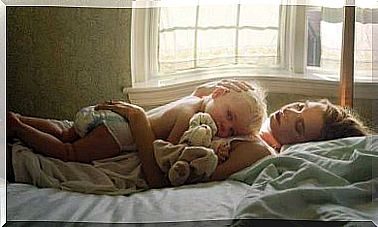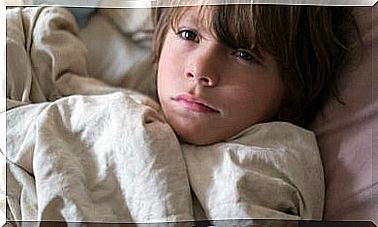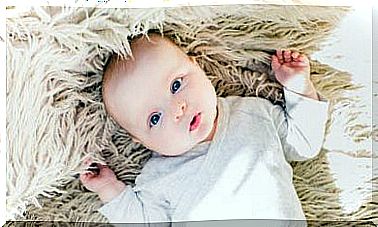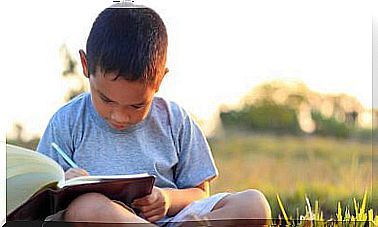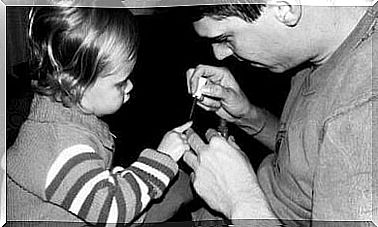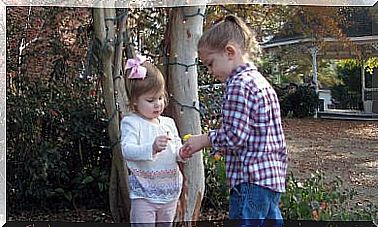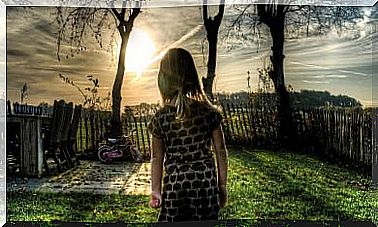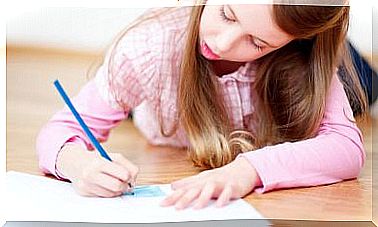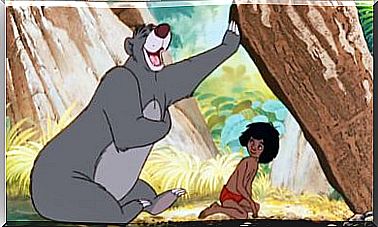Techniques To Develop Language Creativity According To Rodari

It is necessary to develop language creativity, play with words, approach them without fear, addressing the phonological and semantic nature and their syntactic possibilities. For Rodari, developing fantasy and the ability to communicate gives children the ability to defend themselves.
Gianni Rodari techniques to develop language creativity
Gianni Rodari, Italian teacher, pedagogue and writer, teaches us some of his creative resources for telling stories and playing with words. It teaches us how to develop language creativity in our children.
Rodari began writing for children in 1950. He published more than twenty books in which he masterfully combines humor and imagination with an ironic vision of the world today. In 1970 he received the most important prize awarded to children’s literature: the Hans Christian Andersen for Literature.
In his book Grammar of Fantasy: An Introduction to the Art of Storytelling , Rodari proposes various ways to make up stories for children and to help children make up their own stories on their own.
Play with words and tell stories
Next, we will see some of Rodari’s techniques in this regard. The objective of these techniques is to awaken and develop the creativity of language as well as imagination and fantasy in children and not so young.

China in the pond
Rodari starts from the idea that “a word thrown at random in the mind produces superficial and deep waves” , and would provoke associations, sounds, images, memories, fantasies … It is, therefore, about proposing to children a word and work with the contents that they suggest.
Take the word “Chinese” as an example, which suggests words that:
- They start with “chi”, like Chinese, boy, chirigota, slipper, pork rind …
- Begin with “ch”, such as hump, chocolate, pacifier …
- They rhyme in “-ina”, such as latrine, fortune teller, saline, mandarin …
- They are related semantics: rock, stone, marble, brick …
- Uses and utilities of china.
- Words with the Chinese acrostic:
C: one hundred.
H: threads.
I: imagined.
N: blackish.
A: cottons.
Once these possibilities are worked out, good texts can emerge, since your imagination has been stimulated. They can also tell stories or feelings that the word produces.
Fantastic binomial
Two words must be chosen at random; a certain distance is needed between these words. One has to be strange enough to the other and their approach discreetly unusual for the imagination to set in motion a kinship between them. Some pairings could be: brick-song, little hood-helicopter, light-shoes, dog-wardrobe.
Through these binomials, relationships between them can be established by linking them with a preposition and the corresponding articles. Thus, the different forms are obtained:
- The dog in the closet.
- The dog’s closet.
- The dog above the closet.
- The dog in the closet.
Each of these shapes offers the outline of a fantastic situation with which great stories can be created.
What if …?
Hypotheses, Novalis wrote, are like nets: “You throw the net and sooner or later you find something . ” This is a very simple technique. Its form is precisely the question: “What would happen if …?”
To ask the question, a subject and a predicate are chosen at random. Their union will provide the hypothesis to work on. ” What would happen if an elevator went down to the center of the earth? Or if it went up to the moon ?; What would happen if a crocodile knocked on your door asking for salt? “…

The arbitrary prefix
Warping words is a way of making them productive, in a fantastic sense, of course. The spirit of this game is the use of an arbitrary prefix. The prefix des- is enough to transform a razor, an everyday and dangerous object, into a razor , a fantastic and pacifist object, which is not used to sharpen pencils, but to make it grow when it has worn out.
One option for using the arbitrary prefix is to make tables of prefixes and nouns, match them randomly, and then have the children define the word and tell stories.
The creative mistake
From a slip, a story can be born. The well-exploited misspelling can lead to all kinds of humorous and instructive stories. If a child writes in his notebook “It is linden of life” , we have the option of correcting the mistake or following his provocative suggestion and writing the history and properties of that wonderful “linden”. Will it be the linden of life or the linden of death? Or will it be an infusion to become immortal …?
Old games
We can create fantastic themes and stories through games as simple as clipping newspaper headlines and shuffling them to get news of absurd, sensational or just plain funny events.
- The cupola of Saint Peter, wounded by a knife, flees to Switzerland with the money.
- Serious clash on the A2 between one tango and another in honor of Gaspar de Jovellanos.
Entire poems can be composed with just a pair of scissors and a newspaper. Maybe nonsensical, but charming. Another game spread around the world is that of question-and-answer ballots. It starts with a series of questions and, on the other hand, a series of answers that are joined at random.
Little Red Riding Hood by helicopter
Children are given some words to make up a story. Five words form a series and suggest the story of Little Red Riding Hood: girl, forest, flowers, wolf, grandmother , but the sixth one breaks the series ( helicopter ). With this new word they will know the pleasure of inventing. The same can be done with any other story.

The stories backwards
Purposely reversing the stories. For example:
Little Red Riding Hood is bad and the wolf is good …
Or Thumbelina wants to run away from home with his siblings, abandoning the poor parents, who have the cleverness to punch a hole in his pocket before filling it with rice, which is then scattered on the road during the escape. As in the true story, but seen through the looking glass where the left turns to the right.
What? happens later
Even if the story is finished, there is always the possibility of an after. The characters are ready to act, we know their behavior, we know what relationships they have with each other … The simple introduction of a new element sets the entire mechanism in motion. Who has not written or imagined continuations of Pinocchio or Cinderella ?
Storybook salad
Some stories are mixed with others, characters, settings, events are combined … Little Red Riding Hood meets Tom Thumb or Puss in Boots helps Hansel and Gretel with his peculiar way.
In short, as you have seen, there are many techniques suggested by Gianni Rodari in his work to develop the creativity of language in children and adults. What are you waiting for to put them into practice with your little ones and spend fun, entertaining and educational family moments?

